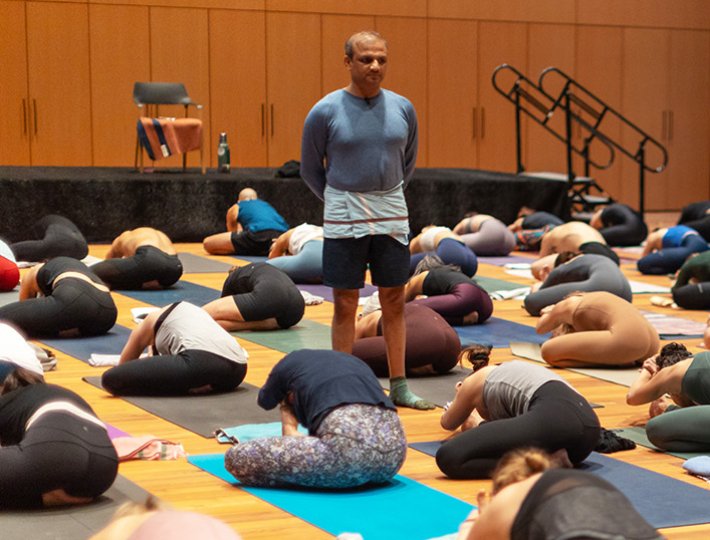Contemplation, meditation, and mysticism have been a part of the Christian tradition since its beginning. Jesus’s personal relationship with God as Father and St. Paul’s visionary conversion are foundational influences on later Christian contemplatives, and many others have developed Christian contemplative ideas and practices through the centuries. Origen and other theologians dialogued with Greek philosophy. The desert fathers and mothers pioneered monasticism. The anonymous author of The Cloud of Unknowing, a 14th century Christian spiritual text on contemplative prayer, advocated letting go of all ideas about God in order to know him intimately. The social justice-oriented Beguines offered community to women mystics. St. Theresa of Avila and her student and contemporary St. John of the Cross described the stages of contemplative prayer and some of the spiritual challenges encountered in this process.
This long tradition continues today. In the last century, Bede Griffiths, Beatrice Bruteau, Thomas Keating, and David Steindl-Rast are among those who have had major impacts on contemplative Christians worldwide, often by incorporating or commenting on the spiritual practices of Buddhism and Hinduism. Perhaps the most influential modern Christian mystic is the late Thomas Merton, a Trappist monk famous for his writings on civil rights and the peace movement, his deep appreciation for Zen, and his friendships with Buddhist teachers Thich Nhat Hanh, D.T. Suzuki, and the Dalai Lama. While Merton studied and wrote actively about Zen (as well as Taoism, Sufism, Hinduism, and Jainism), he never had the opportunity to give considerable energy to Zen practice before he died.
During the same time period and just after, however, many other Christian monks and lay people did study with meditation teachers from other traditions, and used these examples to inspire a revival of Christian meditation and contemplative prayer. In the 1960s the modernizing and ecumenical announcements of the Second Vatican Council opened the door to even greater interspiritual dialogue for Catholics. These movements have led to a robust and growing interest in specifically Christian contemplative practices. In the 1960s and 70s, St. Joseph’s Abbey in Spencer, Massachusetts, held dialogues with Hindus and Buddhists, and hosted retreats by Zen and Transcendental Meditation teachers. The abbot at the time, Father Thomas Keating, then “encouraged the monks at St. Joseph’s to develop a method of Christian contemplative prayer with the same appeal and accessibility that Eastern meditation practices seemed to have for modern people.” Another monk there, Father William Meninger drew from The Cloud of Unknowing to create such a prayer, which was named Centering Prayer in reference to a quote by Thomas Merton that contemplative prayer is “centered entirely on the presence of God.” The main method of centering prayer is to sit and silently repeat a sacred word of your choosing. Over time, the prayer leads to inner quiet and “a receptive prayer of resting in God”. Eventually Keating, Meninger, and a third monk, Father Basil Pennington, began to teach Centering Prayer widely, to both monastics and lay Christians. Spread by many Christian teachers, Centering Prayer continues to be one of the most widely practiced Christian contemplative methods, and Fathers Keating and Meninger still actively teach.
Related: A Simple Guide to the Complex World of Meditation
The history and success of Centering Prayer and other contemplative revivals in modern Christianity raise questions for many contemporary contemplative Christians who draw from other traditions. You may have some of these questions, and regardless of what responses you come to, deeply considering them in your community and on your own may be helpful to you. The most basic inquiry is an ancient one: What makes a given practice Christian? Contemplative prayer and other revivals of Christian contemplation have not been met without controversy from other Christians, and some of this criticism has focused on Centering Prayer’s relationship to Eastern forms of meditation. Other criticisms hold that centering prayer is self-focused rather than focused on one’s relationship to Jesus or God who is outside of oneself. A different question has to do with whether other practices found in Pentacostal and charismatic churches such as speaking in tongues, healings, and ecstatic encounters with the Holy Spirit are considered “contemplative” and what benefits they have.
While this overview of the recent history of Christian contemplative prayer highlights the role that interspiritual dialogue has had in its revival and growth, the questions it raises are relevant to various traditions. Buddhist meditation practices are also commonly part of revivalist movements in Asian countries that began in the last 150 years or so, often under Western influence. Likewise for yoga practitioners: yoga is an ancient system, but many of its asanas, or bodily postures, now so widely practiced, were developed by modern yoga fountainhead Krishnamacharya by observing British calisthenics postures. And yoga continues to undergo enormous further innovations and new applications today. The questions of spiritual identity and efficacy are deep issues that all religious and cultural traditions have had to struggle with throughout time.
While not all practitioners may choose to pursue it, modern contemplative Christianity offers practical methods for spiritual nourishment and insight. If you’d like to learn more about Christian contemplative prayer, several resources offer significant guidance. Contemplative Outreach offers retreats and teachings on Centering Prayer. Many other organizations, such as Father Laurence Freeman’s World Community for Christian Meditation, and teachers such as Brother David Steindl-Rast and Cynthia Bourgeault, help Christians develop contemplative practices as well. The online Contemplative Journal provides community interaction and features writing on many different streams of Christian contemplation. As mindfulness thrives in the Western world, contemplative Christianity is poised for a similar renaissance among religious practitioners seeking ways to apply these practices to their own religious explorations.









Comments (0)